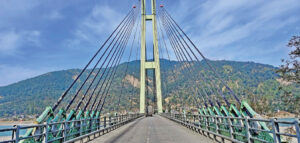
Nepal has gigantic squander potential for biomass, a asset that can essentially boost the economy if accurately overseen and valorised, agreeing to a unused investigate paper.
Harnessing squander biomass may cut the country’s carbon dioxide (CO2) outflows by up to 52 percent and meet up to 12 percent of current vitality utilization, agreeing to the paper entitled ‘Possibilities and challenges for changing over squander biomass into fuel, bolster, and manure in Nepal’.
Most of Nepal’s squander biomass is utilized customarily, such as for kitchen fuel and creature bolster, without appropriate valorisation.
This is a squeezing issue as open dumping and burning, especially of civil squander, is a common hone in Nepal, agreeing to the paper, with negative impacts on the generally ecosystem.
“Our ponder gauges the potential of around 89 million tons of squander biomass yearly in Nepal, basically from the horticulture, civil, animals, fowl, and human sectors,” said Sagar Kafle, collaborator teacher at the Founded of Building, Tribhuvan University.
“We have uncovered the potential at the sub-national level in Nepal, highlighting its conceivable outcomes and challenges for changing over the fuel, nourish, and fertilisers,” said Kafle, who is as of now seeking after PhD at Reddish-brown College, US.
The paper gauges that through the change of squander biomass, Nepal can create approximately 1.7 to 5.0 million tons of pellet or briquette and biochar, 1.7 to 5.1 million tons of bolster square, 129 to 387 million cubic meters of biogas, and 0.6 to 1.9 million tons of fertiliser.
“These important items can have critical natural and financial benefits,” the paper said.
Waste biomass is created from distinctive sources, such as ranger service buildup, agribusiness edit buildup, civil natural squander, and animals squander. Dishonorable administration of such buildup and squander contrarily impacts by and large biodiversity, a developing worldwide concern.
For illustration, the destitute dealing with and administration of civil strong squander, basically produced from the urban segment, contaminates the environment and impacts generally biodiversity, counting human wellbeing. Its administration is one of the critical challenges for the important specialists, as it needs resources.
Municipal strong squander, comprising more than half of natural squander in creating nations, is being dumped and burned transparently in Nepal.
Similarly, open burning of edit buildups, particularly paddy straw, is polished in Nepal, coming about in discuss contamination. This hone is especially noticeable in the Tarai, where combined collectors diffuse straw over the areas, making collection impractical.
Farmers frequently burn the straw as they discover it financially unviable to collect and meet the another editing season.
Livestock fertilizers produce methane amid decay, contributing to worldwide warming. In any case, anaerobic absorption innovation may trap and use this gas as energy.
Also, dishonorable administration of human waste—urine and faeces—pollutes soil and groundwater, influencing human health.
Although the nation has announced itself free from open defecation, dumping crude sewage and septic tank squander into streams is common in Nepal.
Due to the need of appropriate change information and innovation and the inaccessibility of status information, the squander biomass is despicably overseen or expectedly utilized in numerous creating countries.
The ordinary utilize of squander biomass is less productive, perilous to the environment, and does not create financial development. For illustration, utilizing dry compost cake instep of biogas for cooking fuel is less effective, debases indoor discuss quality, and impacts human wellbeing. The need of information era, utilization, and accessibility prevents policymaking and arranging for the biomass-based industry.
Some houses too have toilets associated to biogas plants. In the monetary year 2020-21 alone, approximately 3,975 biogas plants were introduced in Nepal. This appears that squander biomass is used in advanced ways, such as creating biogas. In any case, the larger part is still undiscovered and is expectedly utilized or overseen poorly.
Proper usage of such squander biomass needs evaluation at the subnational level, which will offer assistance create imaginative businesses for economical improvement, such as by improving the neighborhood economy, making employments and expanding the share of renewable energy.
The study’s discoveries are critical and appear gigantic squander potential in the Tarai, particularly in Morang locale of Koshi Province.
Prof Sushil Adhikari, co-author of the consider and teacher at Reddish-brown College, highlighted the openings for creating fuel, bolster, and manures from such squander biomass.
“The pellets and briquettes delivered from squander biomass may viably supplant coal in warm control businesses such as brick and cement. It can diminish the country’s carbon dioxide emanations by up to 52 percent and meet up to 12 percent of current vitality consumption.”
He expounded on the benefits of creating a densified add up to blended proportion utilizing trim buildup. “In Nepal, where mass transport frameworks are missing, and transport costs are tall, such densified nourish pieces may be a amusement changer in nourish industries.”
Further, biogas from squander biomass may decrease the reliance on imported LPG fuel and deliver nutrient-rich manures as by-products.
“The nation needs location-specific information on the potential and accessibility of squander biomass, which is imperative for arranging waste-based industries,” said Prajal Pradhan, the co-author of the consider and collaborator teacher at the College of Groningen, the Netherlands.
Pradhan highlighted need of mass transport frameworks and systems and the challenges due to the geography and landscape, which make troubles in transporting crude materials and last products.
“Uncertainty in venture and showcase, inadequately administration controls and arrangements, and destitute intersectoral coordination are included issues. These challenges require to be tended to to advance squander biomass-based businesses in Nepal,” said Pradhan.
Related
To begin with ever Paralympics fan zones come to London






3 thoughts on “Nepal has colossal biomass potential, inquire about shows”